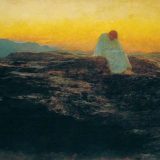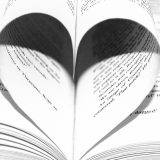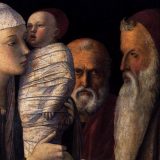Good Friday 25th March 2016
As usual I’ve chosen some pictures for our reflection this Good Friday –goodfridaypics2016 this seems to me to be a good way of exploring the meaning of the crucifixion without getting too involved in dry theology. Also it seems to me that the less you say the better – I have an image in my mid of theologians standing at the foot of the criss discussing its meaning while Jesus hangs there in agony. Art says things without words and I will keep my words to a minimum today.
The first image I’ve chosen today is the top left white image by a painter called Marc Chagall. Chagall was Jewish and Russian. His art speaks of the suffering of his people.
It is easy for us to forget that Jesus was a Jew. We don’t often stop to think of his life from this perspective. Chagall painted this picture in 1938 after a tour around Europe during which he experienced the rise of Nazi brutality the Jews. This was the year the first transport of Jews to concentration camps took place. The painting shows the destruction of the close Jewish community in which Chagall was brought up – the Menorah – the seven branched candlestick of Judaism has only 6 branches as only 5 are alight. At the bottom of the page a terrified mother holds her child close. There is a Jewish Torah scroll with light – or maybe smoke – streaming from it. It is thought the man in green is Elijah returning, this is a sign of hope. At the top- right the synagogue is on fire – a Nazi brown-shirt has done the dirty deed. Above the cross Jewish figures wail and weep at the destruction of their village by Russian communists which you can see on the left. Some people are trying to escape in a boat. At the bottom left more figures run away, one of them clutching a Torah scroll. In the centre of the picture Jesus is portrayed on the cross reflecting the agony of his people. The Christian cross is being used to reflect the sorrow, pain and trouble of the Jewish people with Jacob’s ladder – another Jewish symbol next to it.
From a Jewish point of view this picture is a reflection on Jewish faithfulness in the face of terrible suffering and destruction. Our own religion sees God hanging on that cross – here we pause to reflect on the annihilations of the world today – perhaps especially the people of Syria who wait at our borders having fled in terror very similar to that expressed in this painting. We reflect that among the refugees we turn away is Jesus himself, standing in suffering with his people again.
The picture on the right is by an American artist called Marcus Reichert. Reichert knew from the age of 11 that he had to paint a crucifixion but this didn’t happen until he was in his 40s when one of his friends died of AIDS. It has been said that previous great pictures of the crucifixion pale into insignificance and understatement in comparison with this picture. Here is human suffering at its most extreme – a reminder that the crucifixion was an unbelievably cruel death to inflict on another human and the most cruelly painful way to die. This picture is about the cruelty humans inflict on one another – then and now. Jesus’ death was at the hands of the merciless Roman state. The deaths in Brussels this week have been at the hands of religious extremists – the bombs designed to cause as much destruction and pain as possible. Here is the pain of suffering humanity – the pain of the world carried in one person.
The small red cross at the bottom left is painted over an upside down magazine called ‘Movie Stars’ – a comment on our petty preoccupations in the face of human suffering. The Son of God and Son of Man – the child of humanity – hands suffering and we continue to be consumed with petty issues and concerns as if it didn’t matter. The picture pleads with us to have mercy.
The third picture was painted by Lee Elliott, the son of an Anglican clergyman although not a believer himself. It was painted after a period of extreme illness after which Elliott felt compelled to paint crucifixes in which the image of Christ is fused with that of a tree.
Maybe this painting is to do with terrible suffering of that humans are inflicting on the environment. The glory of the natural world – perhaps expressed in the background of yellow-gold – is slowly being destroyed as surely as the human body is destroyed by crucifixion. It is hard for us to remember that those barren scenes we see of Afghanistan are of places that used to be full of almond trees covered with with their beautiful blossom at this time of year. Now there is a terrible empty barrenness. Our icecaps are melting away, our seas are polluted – the fish and birds are dying. We are crucifying our planet.
The fourth painting is by a French artist called Macha Chmakoff – a psychologist and psychoanalyst, as well as a painter. She studied theology at the Catholic Institute of Paris. It focusses not on the cross itself but on the women standing at its foot. I chose this picture because I think, in the face of such suffering we need to decide what to do. Often we feel there is nothing much we can do. But often we choose to look away – we’d rather not see this terrible suffering. The ghostly figures in the fourth picture remind us of the simple importance of being there, of faithfulness, of facing up to the terror of this world, of choosing not to avert our eyes. Sometimes this is all we can do – to refuse to avert our eyes – to stand obstinately at at the foot of the cross where the love of God meets the pain of the world. To stand and not look away.




